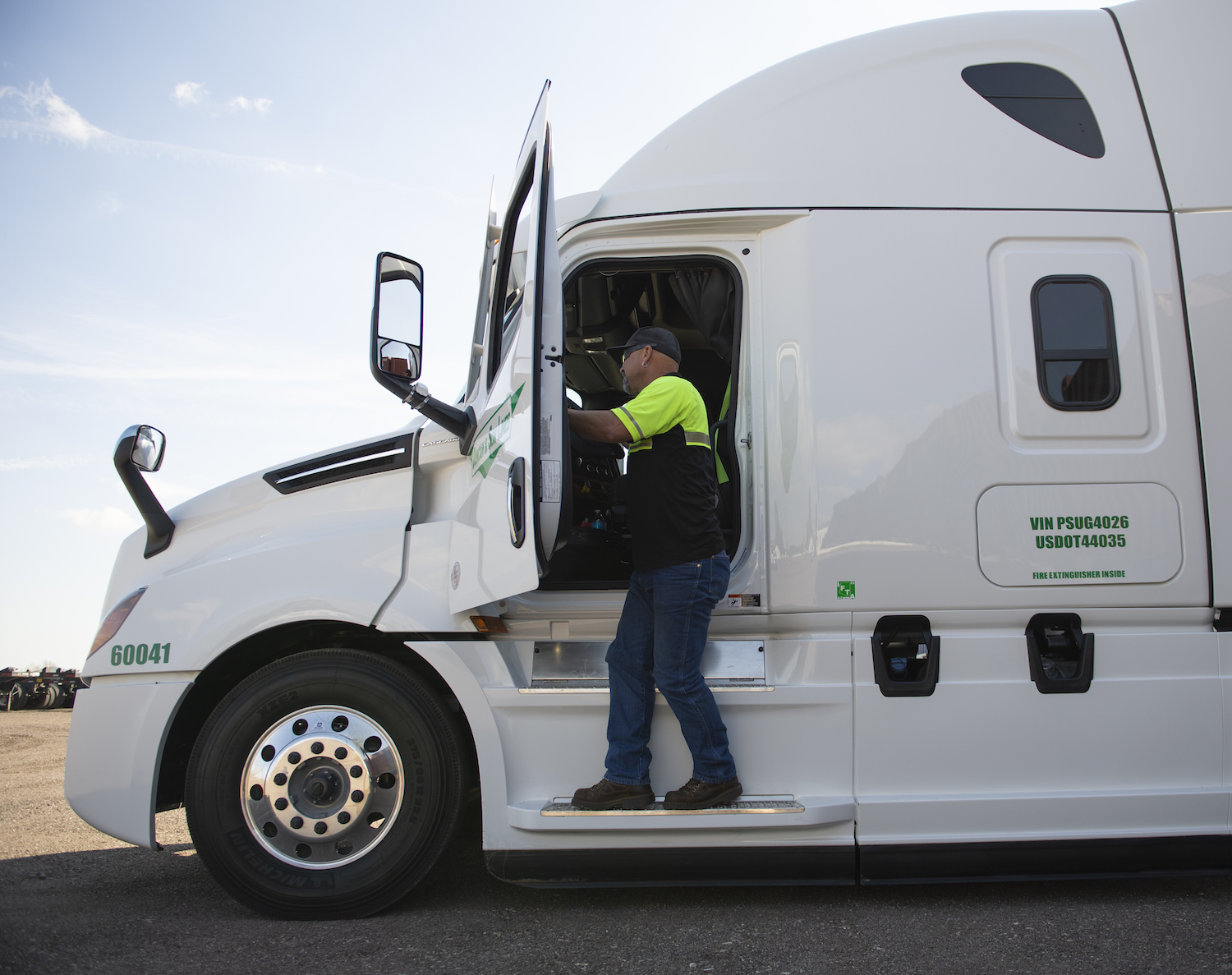
The Role of Container Drayage Services in International Trade
The efficient movement of shipping containers around the world is critical for keeping international trade humming. When you think of global cargo shipping, you might picture large container ships floating across the sea or railroad trains chugging along the countryside. But have you ever thought about how the containers got onto those vessels in the first place?
That’s when container drayage services come into the picture. Drayage services make it possible for supply chains to seamlessly transfer intermodal shipping containers from one transportation mode to the next, speeding the global shipping process.
Here, we’ll discuss what container drayage services are, their benefits, and the essential part they play in international trade.
What Are Container Drayage Services?
Container drayage services use special equipment to transfer freight shipping containers short distances. If your container arrives by ship, for example, drayage services take over the short leg of its journey to its next destination, which may be a rail hub, warehouse, or another terminal for processing and distribution.
Container drayage shipping services can be short-haul or interfacility. Short-haul drayage services focus on deliveries within a local geographic or metropolitan area, while interfacility drayage services keep containers moving through different locations and carriers.
What Role Do Container Drayage Services Play in the Global Economy?
Drayage services are required to facilitate international trade. Without them, companies would have no way to connect ports to domestic distribution networks on the front end or back end of the shipping process.
Drayage services don’t just help with transportation – they also assist with port operations. These services are responsible for moving containers in and out of the ports in a timely manner, which keeps ports from overcrowding and shipments from being delayed.
Types of Container Drayage Services
Depending on the container’s origin and destination, there are a few types of drayage transportation services available, including the following.
Pier Drayage Services
Pier drayage services help transport goods from rail yards, trucks, or a container freight station to a port. These drayage services have significantly eased the task of transferring shipping containers overseas. If your shipment involves ocean freight, you’ll likely need to employ pier drayage to transport your goods to a dock or pier.
Inter-Carrier Drayage Services
Inter-carrier drayage services help move containers between intermodal carriers, such as railways and cargo ships that are operated by different companies. This helps to fill gaps within intermodal transportation.
Intra-Carrier Drayage Services
Intra-carrier drayage services move goods between shipping hubs owned by the same carrier system. This typically means transferring the container between different modes of transportation or from one storage facility to another in the company’s network.
Expedited Drayage Services
Companies use expedited drayage services when they’re managing time-sensitive deliveries and need service quickly. This container drayage service is commonly used by companies that offer same-day shipping.
Shuttle Drayage Services
Sometimes ports or origin hubs become crowded. When this happens, companies may rely on shuttle drayage services to take the container unit to a temporary stopping point until it can move forward.
Door-to-Door Drayage Services
As the name implies, door-to-door drayage services deliver a container directly to a customer instead of a warehouse or storage facility. This offers additional convenience to the customer, who won’t need to go pick up the items they ordered.
Benefits of Using Container Drayage Services in International Trade
By nature, container drayage services come with benefits that help improve the global economy. Here are some of the top perks.
Improved Efficiency
Drayage services minimize delays in the supply chain to ensure smoother logistics by reducing congestion at ports and terminals. This helps the shipping process to move more quickly and smoothly throughout the container’s entire journey.
Cost Savings
Because drayage services focus on short-haul transportation, they’re often less expensive than other container transportation options like container rentals, intermodal chassis, and planes. They’re also quicker, which saves businesses money in the form of time. Experienced container drayage service providers will optimize the route between destinations to reduce overall transportation costs.
Greater Visibility
Drayage services provide tracking capabilities that allow businesses to monitor the real-time status and location of their shipments. With this enhanced visibility into the movement of their cargo, they can make more informed business decisions.
Expert Knowledge
Because their companies depend on it, drayage service providers are experts at navigating the complexities and compliance requirements of ports. This can be especially helpful for companies that are shipping refrigerated containers or oversized cargo, as it helps them reduce possible risks associated with port operations.
Flexible Solutions
Certain intermodal equipment used by drayage services can adapt to different container shapes and sizes. This provides businesses with the flexibility they need to transport all kinds of international freight.
Challenges in Container Drayage and How to Overcome Them
While container drayage services are crucial for global trade, they also come with their own set of challenges. Understanding these obstacles and knowing how to address them can make a significant difference in ensuring the efficiency and reliability of your supply chain.
1. Port Congestion
One of the most common challenges in container drayage is port congestion. As trade volumes grow, ports can become overcrowded, causing delays in loading and unloading containers. This can lead to increased wait times, higher costs, and potential disruptions in the supply chain.
How to Overcome It: Working with an experienced drayage service provider can help you navigate this issue. They can coordinate with ports and leverage shuttle drayage services to temporarily move containers to off-site locations, freeing up space and reducing congestion. Additionally, using data analytics to forecast peak times can help companies adjust their shipping schedules to avoid bottlenecks.
2. Driver Shortages
Another significant issue facing the drayage industry is a shortage of qualified truck drivers. This can slow down the transportation of containers from ports to their final destinations, leading to further delays in the supply chain.
How to Overcome It: Drayage companies can mitigate this challenge by partnering with third-party logistics providers to access a larger pool of drivers. Implementing technology like real-time tracking can also allow for better route planning, reducing the time drivers spend on the road and maximizing the efficiency of available resources.
3. Regulatory Compliance
Shipping containers must comply with various regulations depending on the cargo, origin, and destination. Navigating the complex web of international, federal, and local laws can be challenging, especially when transporting hazardous or sensitive materials.
How to Overcome It: Partnering with a drayage provider that specializes in regulatory compliance is key. These providers have the expertise to ensure that all cargo meets the necessary requirements, avoiding fines, delays, and potential legal issues. For example, refrigerated containers or oversized cargo often require special permits and handling procedures, which an experienced provider can manage effectively.
4. Rising Costs
The cost of drayage services can fluctuate due to fuel prices, labor shortages, or other economic factors. These rising costs can strain shipping budgets and increase overall logistics expenses.
How to Overcome It: Companies can control costs by optimizing their drayage operations. This includes consolidating shipments to reduce the number of trips, negotiating long-term contracts with drayage providers for better rates, and leveraging technology to track and optimize fuel consumption.
5. Weather-Related Disruptions
Bad weather can be a significant disruptor for container drayage, especially in regions prone to hurricanes, floods, or snowstorms. Such conditions can cause delays in transport and even damage containers.
How to Overcome It: To mitigate the impact of weather-related disruptions, businesses should have contingency plans in place. This includes working with a flexible drayage provider that can adjust schedules or reroute shipments when needed. Tracking technology also allows for real-time updates, helping companies stay informed and make adjustments accordingly.
The Country’s Premier Container Drayage Services Provider
International shipping can feel daunting, especially for companies that are still nailing down their supply chain logistics or need to change operations. Container drayage services take the headaches out of getting containers to and from their vessels in a way that’s safe, secure, and compliant.
DSL Logistics specializes in reliable drayage trucking and seamless intermodal transport planning solutions. Improve your supply chain’s efficiency today – request a quote!
Categories
- Drayage




